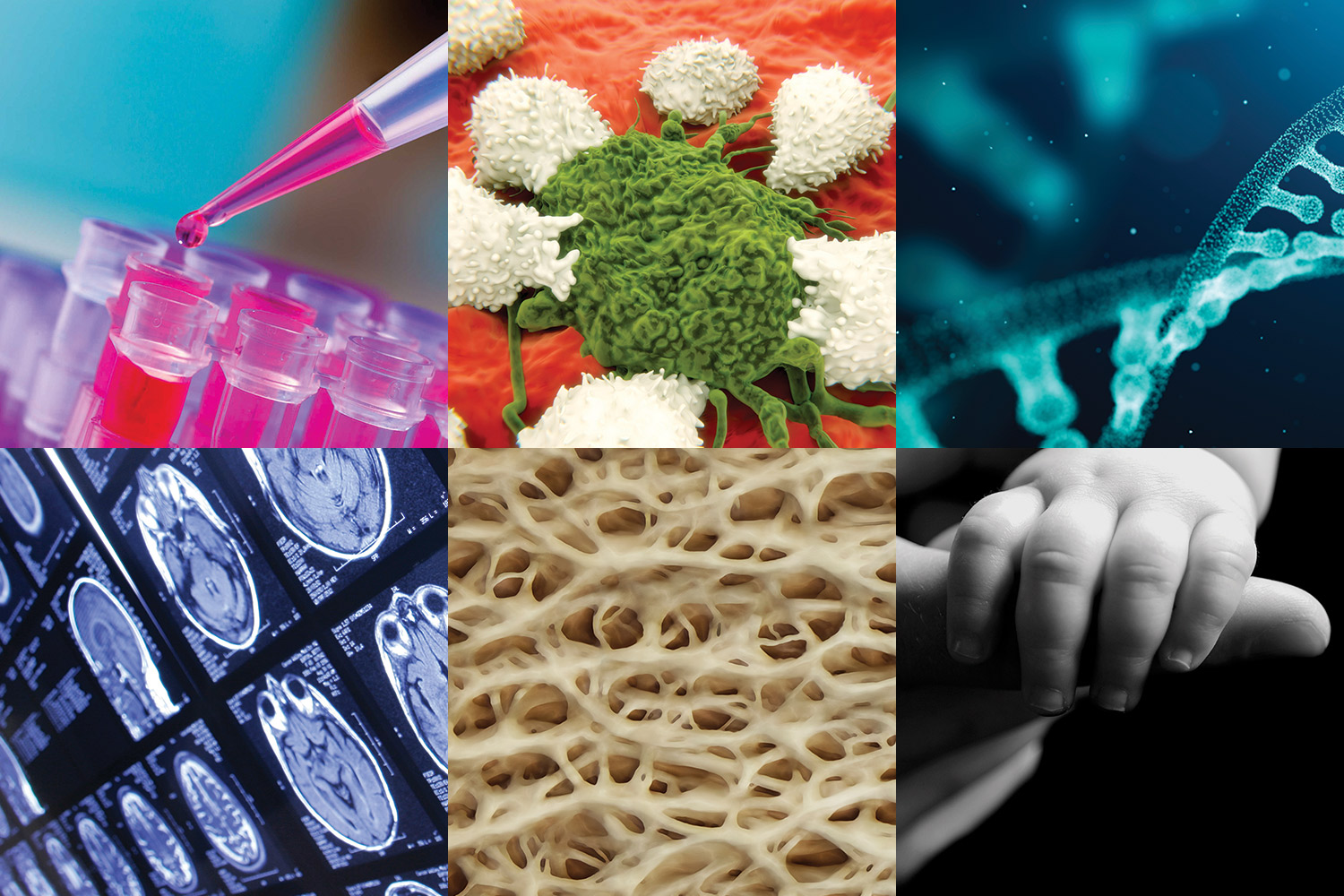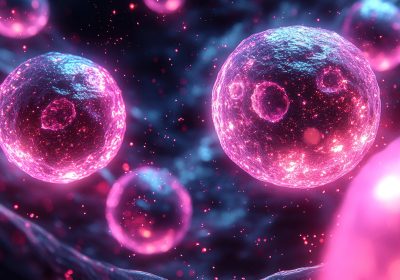
Scientific Working Groups Drive Progress
With more than 44,000 members worldwide, the American Association for Cancer Research (AACR) has unique opportunities to create and foster collaborations among investigators who share similar scientific interests. These alliances benefit not only AACR members, but also generate insights and ideas that can advance cancer prevention, early detection, interception, and treatment.
In order to nurture these scientific alliances, the AACR has created a number of scientific working groups, each dedicated to a specific area of cancer research. The first group established, the Molecular Epidemiology Working Group, was initiated in 1999 and is now one of six working groups. The other five focus on Cancer Immunology, Chemistry in Cancer Research, Pediatric Cancer, Radiation Science and Medicine, and the Tumor Microenvironment. These groups represent large collections of individuals dedicated to their areas of interest and serve as communities working together to make important advances that will shape cancer care.
Bridging Disciplines
Shelley S. Tworoger, PhD, associate center director of Population Science at the H. Lee Moffitt Cancer Center and Research Institute in Tampa, Florida, currently chairs the Molecular Epidemiology Working Group Steering Committee. Dr. Tworoger said the “small but mighty” group of 901 members is distinguished by the breadth of cancer research fields represented. “We really want to engage people from across disciplines and foster team science,” said Dr. Tworoger. “While many members of the group are epidemiologists, we also have clinical colleagues, data scientists, pathologists, and immunologists, which is one of the things that makes this group exciting and unique.”
The Molecular Epidemiology Working Group’s efforts help investigators gain new insights into how lifestyle factors and genetics may increase risk for certain cancers, said Dr. Tworoger. The working group also offers avenues for researchers to collaboratively develop ways to use this information to predict which specific individuals are at higher risk for developing certain cancers. “If we can say this person may have this specific risk,” said Dr. Tworoger, “we can subsequently target prevention strategies that either involve medication or lifestyle changes that are known to reduce an individual’s cancer risk.”
In recognition of the increased role of technology in cancer research, the Molecular Epidemiology Working Group held a four-day conference, Modernizing Population Sciences in the Digital Age, in San Diego in February 2019. The meeting was designed to capitalize and expand on the working group’s diversity by including sessions on topics such as using data gathered by wearable digital devices in studies and linking electronic health records with cancer data registries to further research.
The meeting couldn’t have been more timely. “The content of our recent meeting connects with what is happening at the U.S. Food and Drug Administration, with real-world data, and real-world evidence,” said Dr. Tworoger. “We want to find unique ways to leverage data that has already been collected in order to advance our understanding and knowledge of ways to work with patients on cancer prevention.”
Childhood Cancer Research
The Pediatric Cancer Working Group was established in 2011 with the mission to establish childhood cancer research as a global priority. To achieve this goal, the group provides a place for its 3,371 members to communicate and collaborate with one another as well as with advocacy and legislative groups focused on the prevention and cure of all childhood cancers.
In October 2016, the working group organized an AACR Workshop on Childhood Cancer Predisposition and Surveillance that brought together 65 leading researchers. The participants represented 31 childhood cancer centers with established hereditary cancer risk programs in 11 countries. The meeting focused on the 50 most common inherited syndromes that increase a child’s risk of developing cancer before the age of 20. These syndromes, caused by genetic mutations inherited from one or both parents, include Li-Fraumeni syndrome, which increases the risk for several types of cancers; hereditary retinoblastoma, the most common type of eye cancer in children; and Lynch syndrome, which increases the risk for colorectal and other cancers. The workshop resulted in the publication of 18 peer-reviewed articles that defined a series of recommendations to effectively screen for these syndromes and suggested how to initiate surveillance protocols to assist with the identification of cancers as early as possible. This special collection, published between July and November 2017 in the AACR journal Clinical Cancer Research, is available for free at clincancerres.aacrjournals.org/pediatricseries.
Garrett M. Brodeur, MD, director of the Cancer Predisposition Program at Children’s Hospital of Philadelphia, chaired the Pediatric Cancer Working Group from 2015 to 2017, guiding the development of the workshop and its resulting publications. At the time, he said, “there was a growing awareness that cancer predisposition syndromes were more common than we thought.” Recent studies have suggested that at least 10% of pediatric patients present with an inherited mutation in a cancer predisposition gene.
Initiating a surveillance program in patients with these syndromes, explained Dr. Brodeur, allows doctors “to detect tumors early when they are small so that there may be a better prognosis and less treatment-associated toxicity.” Prior to the workshop, many rare childhood cancer predisposition syndromes had no established standard of care, and doctors did not always know how to proceed. “Now,” he said, “we have something that basically everyone in the world who has a program of this sort is using or following to track and treat their patients.”
Kimberly Stegmaier, MD, a pediatric oncologist at the Dana-Farber Cancer Institute and Boston Children’s Hospital, is the current chair of the Pediatric Cancer Working Group. She was one of the pediatric oncologists who worked with the AACR to establish the group in 2011. “It’s incredible for me to see where we were then and where we are now,” said Dr. Stegmaier.
In September 2019, the group held the biennial Advances in Pediatric Cancer Research meeting in Montréal. “This meeting is a treasure,” said Dr. Stegmaier. “It is one of the only meetings that brings together pediatric researchers from across multiple disciplines—from laboratory scientists to clinical investigators—and across different cancer types.”
Dr. Stegmaier said being a member of the Pediatric Cancer Working Group has allowed her to see firsthand how each of the working groups can benefit AACR members. “The groups provide a place to bring new ideas forward,” she said.
AACR Scientific Working Groups
Cancer Immunology
This working group for immunologists and non-immunologists, established in 2010, provides a forum for its 7,074 members to discuss this new approach to cancer treatment.
Chemistry in Cancer Research
Established in 2005, this working group, which has 2,683 members, promotes the critical role that chemistry plays in developing new cancer treatments.
Molecular Epidemiology
The AACR’s first working group, established in 1999, fosters and strengthens team-based, translational research among its 901 members.
Pediatric Cancer
Founded in 2011, this working group’s 3,371 members work to make childhood cancer research a global priority.
Radiation Science and Medicine
The newest AACR working group, established in 2015, fosters transdisciplinary research on radiation and cancer among its 1,530 members, who include radiation oncologists, radiation biologists, and medical physicists, as well as cancer researchers in other fields.
Tumor Microenvironment
The 7,110 members of this working group, which was established in 2006, guide the organization’s educational activities that address how the microenvironment—the cells and tissue that surround a tumor—assist cancer onset and progression.





